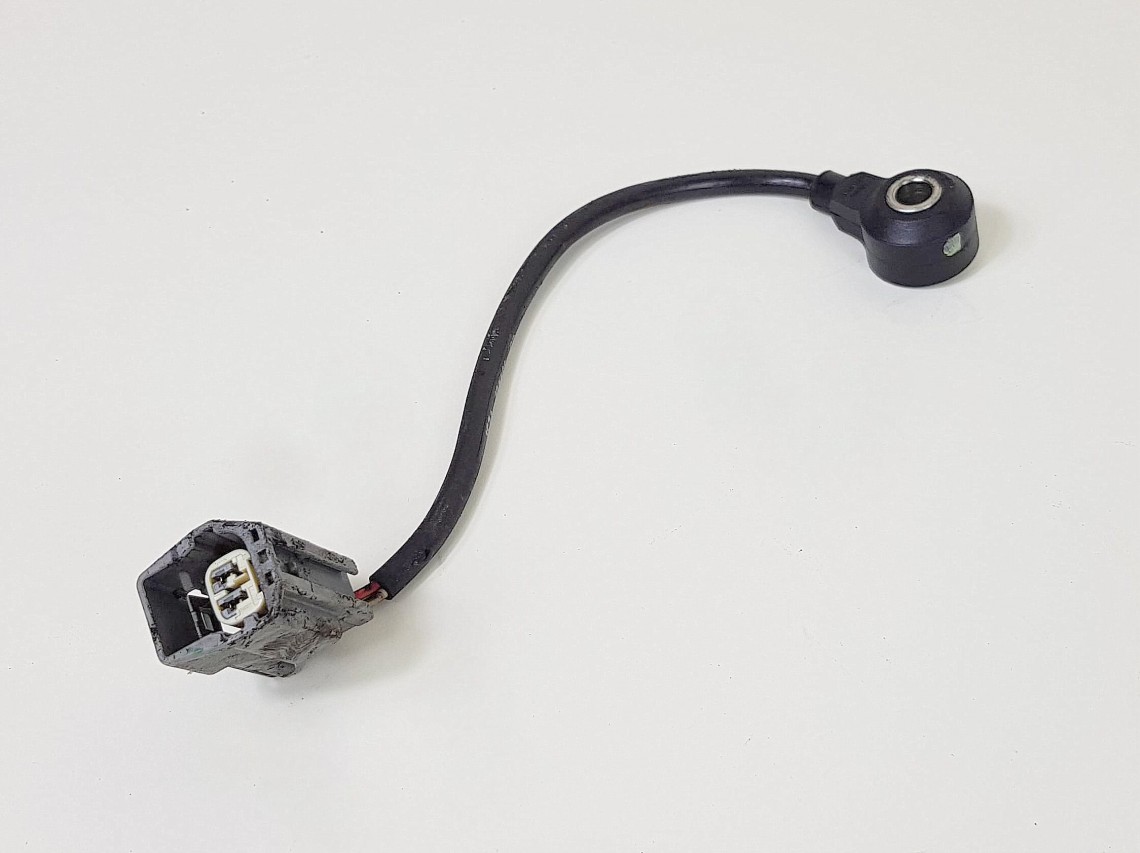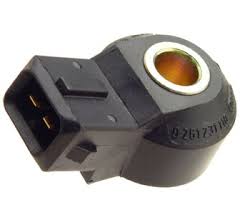
Furthermore, a reduction in number of the parts has permitted improvement of productivity and reliability, as well as cost reduction. As a result, it provides a decrease of quality factor (Q) at resonance time, expansion of the knock detecting frequency bandwidth, improvement of response and an increase in the S/N ratio regarding electrical noise. The sensor has a piezoceramic with enlarged surface causing an output voltage increase which results in a decrease in computer input impedance. This knock sensor's knock detecting part has a disc center support structure. The new resonance–type knock sensor introduced in the 1986 model Toyota Supra (3.0ℓ DOHC) is characterized by its remarkably expanded knock detecting frequency bandwidth.

I'll figure it out.Since adoption of a knock control system (KCS) on Toyota Crown (2.0ℓ OHC with Turbo–charger) in autumn 1980, Toyota has continued development and application of various resonance–type and non-resonance–type knock sensors using piezoelectric elements (piezoceramics), with the aim of obtaining stabilization of characteristics and a high degree of reliability for our KCSs.
#KNOCK SENSOR FULL#
I don't really suspect the fuel distributor at this time, due to the fact that under full throttle, it runs spectacularly, wow! It's just partial throttle that it bogs.Īnd so it goes. A factory sensor lists for 246, or a WVE part costs about 110. For a 2003 Toyota Camry with a 2.4 liter engine, the labor to replace the knock sensor is 1.4 hours.

This makes the job to replace the sensors about 500 using OE parts, or about 470 using aftermarket parts. (getting some house painting done before the rain). A factory sensor lists for 50, and a Standard part costs about 35. I will just buy two knock sensors and try to put them in, I've heard that because they are underneath the engine mounts, I will have to lift the engine off it's mount to change it, but I haven't had time to look at that yet. I've thrown a lot of parts at the thing, and improved it enormously since I bought this "lost cause" for $1500! It's only clocked 94,000 miles, one owner, garaged, California car with zero corrosion on anything. It adjusts the throttle plate's relationship to the fuel distributor. Apparently, California cars were the only ones with this. It has CIS injection, with OBD1 diagnostic port, that has a blinker built into it. Here is a pic.Ĭlick to expand.I appreciate your efforts to help me, I really do! I will next clean the main ground strap, to make sure it is good. (I installed a ground strap from the exhaust clamp near the sensor, to the body of the car). (new sensor installed)Ĩ= Altitude pressure signal from ignition control module illogicalġ7= Oxygen sensor is shorted to positive or ground. Which on my list refers to:ĥ="Oxygen sensor signal illogical. Its function is to monitor engine operation to optimise performance. So, the only thing that controls the timing is the knock sensors. The knock sensor is located on the engine block, cylinder head or intake manifold. Never stalls or sputters, just doesn't go. Starting off from a stop light, the initial 20 feet is okay, then the engine just stops accelerating, as in completely retarded timing. When the cold start clicks off, then it begins. When engine if cold, the car runs very normally, acceleration is normal, lots of power.

When I adjust the idle screw, it can make a difference, and sometimes it doesn't.

I will try to describe what is happening when I drive. I don't know for sure, but if the EZL is faulty, I am not sure the engine would run? Dunno. I checked with K6JRF, who initially alerted me to the approach in a private email, but he didn't know what the resistance should read.Ĭlick to expand.Thank you so much for all you have done, valuable information for me.Īt this point, I either replace both sensors (fairly cheap), or replace the EZL (not so cheap). If somebody could check their car by pulling that connector and measuring sensor 1 and sensor 2 (they should be the same reading-or roughly the same), then I could compare it to mine. What isn't clear to me is what the resistance should read. One of those pins is ground, the other two are the left and right sensor. My understanding is that when you put an ohm meter on connection N1/3 you can measure a passive resistance through the sensor. So these old girls were ahead of their time. What better place to actually 'listen' to the vibrations the engine makes? And what better way to do it? I seriously doubt you would find an older car (1992) with a knock sensor. A load cell is really just a bathroom scale on steroids. But I've never had one in my hand to inspect it.


 0 kommentar(er)
0 kommentar(er)
